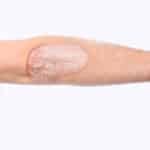What Is a Lipoma?
Discovering any lump on or under your skin can be unsettling. Often detected during middle age, lipomas are fairly common fatty lumps that can be found anywhere on the body. In addition to knowing the characteristics of lipomas, it is helpful to understand whether they are indicative of a more serious, underlying health problem.
Lipomas have a soft, almost doughy consistency and aren’t tender to the touch. Located between the skin and underlying muscle, they are growths of fatty tissue that can be felt just below the surface of the skin. They can be moved easily with the application of light pressure and tend to measure 5 cm or smaller. Since they don’t cause pain and are a slow-growing soft tissue condition, often they are not discovered for a long time after they first develop. When they finally reach a size that makes their appearance noticeable or they become irritating due to their location, they generally are addressed, although treatment is not necessary.
The question of whether or not to remove a lipoma is based on cosmetic considerations or whether it is pressing on a nearby nerve, causing pain or irritation. Although they are soft tissue tumors, they do not tend to be cancerous. Liposarcoma, a rare condition that resembles a lipoma, is a cancerous tumor that can develop in fatty tissue, however it grows much faster and can cause an increased level of pain. A physician can distinguish between the two conditions and may perform an ultrasound or other form of imaging test as well as a biopsy on the area in question, particularly if the lump is large.
While the presence of lipomas may be attributed to genetic factors or physical trauma, the actual causes are unknown. They tend to be more prevalent in those who certain genetic disorders, such as Gardner’s syndrome, Cowden syndrome, or adiposis dolorosa. Age is also a factor, as the majority of those who have lipomas are between the ages of 40 and 60.
If a lipoma is not removed, no other treatment is generally recommended for the area. Options for removal include liposuction or surgical removal. Since a lipoma does not affect surrounding tissue, the procedure to remove one is considered rather straightforward, and patients can go home the same day to recover. After making an incision, the surgeon loosens the fact, which they can be vacuumed (liposuction) or excised. Local anesthesia is generally used during the procedure.
Recovery after lipoma removal is generally minimal, and most patients can return to work the next day or so following the procedure. Stitches will be in place for 1 to 2 weeks. During this time it is important to follow the instructions of a physician to minimize the amount of scarring that occurs.
While lipomas can resemble the rare condition liposarcoma, they generally are not cancerous and do not require treatment unless removal is desired. Through a straightforward procedure with minimal recovery, a physician can address the cosmetic concerns or discomfort associated with this type of growth.





